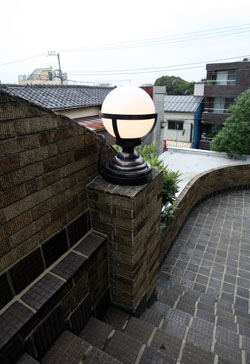
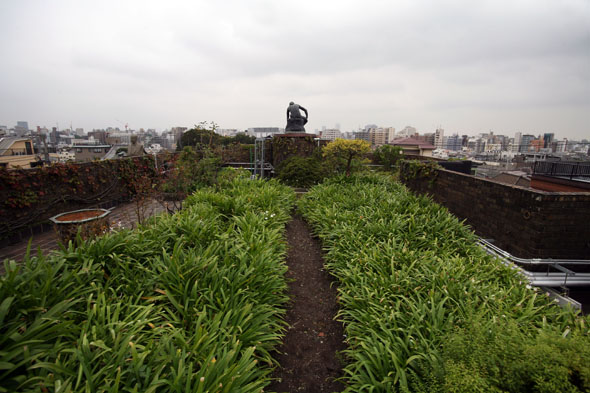
Fumio Asakura thought that horticulture was one of the essential disciplines for artists. Therefor, practice in gardening on the rooftop was requited for his students at "Choso Juku," or his private sculpture school. He wrote the following anecdote in his book "Choso Yoteki.”
"Although it sounds like a splendid roof garden if I say that I have a vegetable garden on the roof. Since I built the house that fills the grounds, there is no space to plant a flower and sow seeds. So I just put soil on the roof, ... my students also learn horticulture in this garden. A specialist of horticulture comes to this garden once a week, and gives students guidance. Students have been taught how to graft roses, sow flower seeds and grow vegetables. This year, they could at last grow seedlings by themselves as if a baby toddles around. ...
I think that sharpening students' intuition, making use of that small garden, is also an act of harvesting. By doing so, they can hear meaningful words from plants. They hear those words through their intuition. The primary purpose in including horticulture in the regular curriculum is that sculptors need to have the intuition. However, it is obvious that intuition is required for every kind of work."
The rooftop garden overlooking the Yanaka area reminds us of local nature of Oita Prefecture. It is also a space where we forget that it is located in the urban area. We can recall Fumio Asakura who grew vegetables, enjoyed the beauty of orchids that he grew as his hobby, and played with his cats.
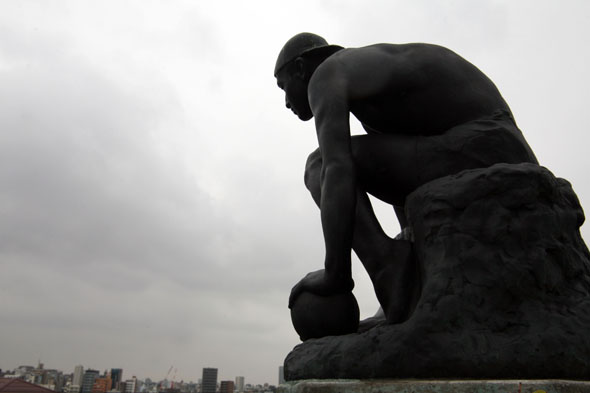
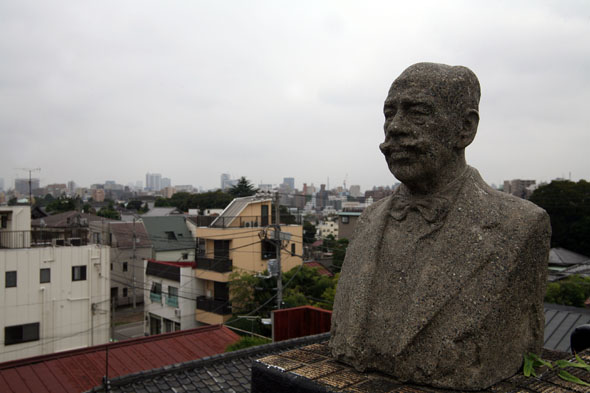
Sculptures are placed on the roof of the studio wing. Those statues and rows of houses in Yanaka which spread out beneath our eyes create large space.
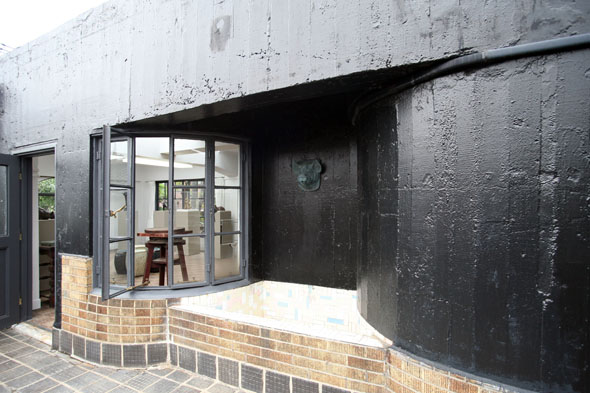
There was a washing place, where vegetables harvested from the rooftop garden were washed, at a landing leading from Ran-no Ma to the roof. Water was provided from the mouth of the bronze statue set to the wall, which was created by his apprentices.














